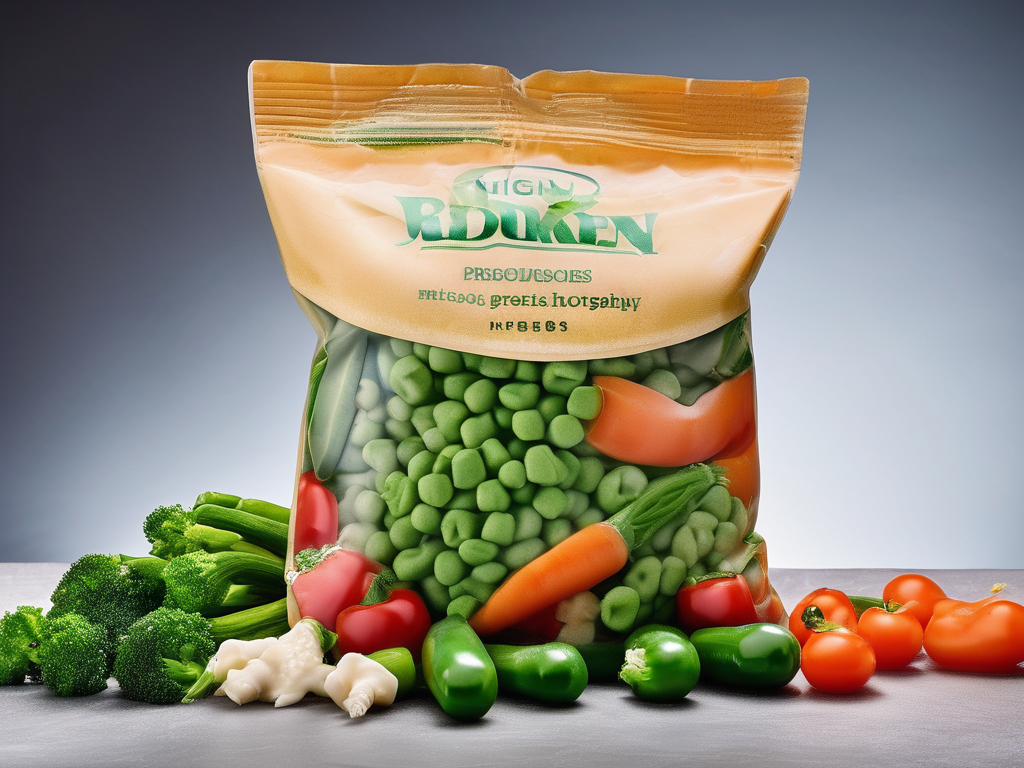
Properly Storing Frozen Vegetables in Unopened Bags to Prevent Freezer Burn
Get Your Free Food Safety Cheat Sheet
30 most common foods with instant answers. Print it and stick it on your fridge—completely free!
Properly Storing Frozen Vegetables in Unopened Bags to Prevent Freezer Burn
Frozen vegetables are a convenient and nutritious option to have on hand for quick and easy meal preparation. However, improper storage can lead to freezer burn, which affects the quality and taste of the vegetables. In this guide, we will discuss how you can properly store frozen vegetables in unopened bags to prevent freezer burn. (Frozen vegetables unopened bag)
Understanding Freezer Burn
Before diving into storage tips, it's essential to understand what freezer burn is and how it occurs. Freezer burn happens when the moisture in food evaporates and forms ice crystals on the surface. This can result in a dry, discolored appearance and a change in texture and flavor. While freezer burn doesn't pose a health risk, it can significantly impact the quality of your frozen vegetables.
Importance of Proper Storage
Properly storing frozen vegetables is crucial for maintaining their taste, texture, and nutritional value. By following the right storage practices, you can extend the shelf life of your frozen vegetables and ensure that they retain their freshness.
Tips for Storing Frozen Vegetables in Unopened Bags
Here are some practical tips to help you store frozen vegetables in unopened bags effectively:
-
Check the Packaging:
- Ensure that the bag is tightly sealed and free from any tears or punctures. Damaged packaging can expose the vegetables to air, leading to freezer burn.
-
Maintain a Constant Temperature:
- Set your freezer to 0°F (-18°C) or lower to keep the vegetables frozen solid. Fluctuating temperatures can contribute to freezer burn.
-
Organize Your Freezer:
- Store the frozen vegetables in a single layer, if possible, to allow for even freezing and minimize the risk of freezer burn. Avoid overcrowding the freezer to maintain proper air circulation.
-
Use a Freezer-Safe Container:
- If the original packaging is not sufficient, transfer the vegetables to a freezer-safe container or airtight freezer bag. Make sure to remove any excess air before sealing the container.
-
Label and Date:
- Properly label the container with the type of vegetables and the date of freezing. This will help you keep track of the storage time and ensure that you use the oldest packages first.
-
Rotate Your Stock:
- Practice FIFO (first in, first out) by rotating your frozen vegetable stock. Use older packages before newer ones to prevent them from sitting in the freezer for too long.
How to Prevent Freezer Burn
In addition to proper storage techniques, here are some additional ways to prevent freezer burn on your frozen vegetables:
-
Avoid Temperature Fluctuations:
- Limit the number of times you open and close the freezer door to maintain a consistent temperature.
-
Use Quality Freezer Bags:
- Invest in high-quality freezer bags or containers that provide a good seal to protect the vegetables from air exposure.
-
Wrap Vegetables Properly:
- If you need to reseal the original bag, use airtight freezer-safe wrap or aluminum foil to prevent air from reaching the vegetables.
-
Store Away from the Door:
- Keep your frozen vegetables away from the freezer door, as they are more likely to be exposed to temperature fluctuations in this area.
-
Avoid Freezer Overcrowding:
- Allow for adequate space between items in the freezer to promote proper air circulation and prevent uneven freezing.
Conclusion
Properly storing frozen vegetables in unopened bags is essential for preserving their quality and flavor. By following the tips outlined in this guide, you can prevent freezer burn and enjoy delicious, nutrient-rich vegetables whenever you need them. Remember to check the packaging, maintain a constant temperature, and practice good freezer organization to extend the shelf life of your frozen vegetables. With these simple steps, you can ensure that your frozen vegetables stay fresh and delicious for longer periods. (Frozen vegetables unopened bag)
Authoritative Food Safety References
These agencies and university labs inform every tip and health precaution we publish.
USDA FoodKeeper – Cold Storage Guidelines
Official refrigerator, freezer, and pantry timelines maintained by the U.S. Department of Agriculture.
Visit USDA FoodKeeperFDA Produce Safety Rule & Grower Guidance
Field-to-fridge handling practices that prevent contamination of fruits, vegetables, and leafy greens.
Visit FDA Produce SafetyCDC Foodborne Illness Prevention Hub
Surveillance-backed guidance on pathogens, symptoms, and steps to reduce foodborne illness risk.
Visit CDC Food SafetyUC Davis Postharvest Technology Center
University research detailing optimal storage atmospheres for produce after harvest.
Visit UC Davis PostharvestPenn State Extension – Home Food Preservation & Safety
Peer-reviewed extension bulletins on safe canning, chilling, and reheating practices.
Visit Penn State ExtensionGet Your Free Food Safety Cheat Sheet
30 most common foods with instant answers. Print it and stick it on your fridge—completely free! Want more? Upgrade to the complete guide with 70+ foods.
Scan your food directly and get instant safety info using our AI-powered camera feature.